Iranians Eye Iraq's Highest Oil Exports In 50 Years
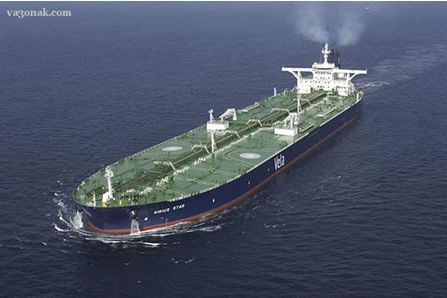
Iraq’s oil ministry says it exported $11billion of oil in March, the highest level for half a century, as crude prices soared in the wake of Russia’s invasion of Ukraine.

Iraq’s oil ministry says it exported $11billion of oil in March, the highest level for half a century, as crude prices soared in the wake of Russia’s invasion of Ukraine.
Iraq’s record shipment of crude caught the attention of several Iranian pundits who drew attention on social media to Baghdad’s success, while Iran is still hampered by United States sanctions.
The ministry said on Friday that the country exported "100,563,999 barrels for revenues of $11.07 billion, the highest revenue since 1972". This makes Iraq’s daily shipments three times more than Iran’s clandestine exports.
The record oil export makes the country the second-largest producer in the Organization of the Petroleum Exporting Countries (OPEC) after Saudi Arabia.
In February, oil revenues reached an eight-year high of $8.5 billion, with daily exports of 3.3 million barrels of oil as crude prices jumped over fears of a major supply shortfall after Moscow invaded Ukraine.
President Ebrahim Raisi and his oil minister claim that Iran has increased oil output and exports to pre-2018 levels when former US president Donald Trump withdrew from the 2015 nuclear deal with Iran and began imposing sanctions on Iranian oil exports.
However, various estimates of Iran’s shipments in recent months have ranged between 750,000 to one million barrels a day, suggesting that once the sanctions are lifted Iran may be able to double its output.
Oil Minister Javad Owji said on March 21, "We will never reveal the destinations, markets and methods of selling oil”. He had earlier said that Iran plans to increase its daily oil production to 5.7 million bpd without providing any timeframe.
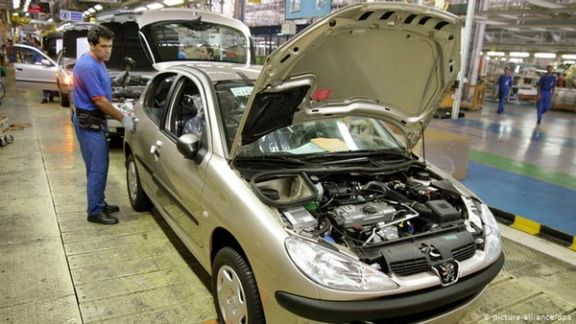
Industry critics say a “mafia-like” influential group is behind a ban on car imports to eliminate competition to Iran's auto industry where their interests lie.
In an interview with Bazaar website on Monday, Mehdi Dadar, secretary of car importers' association, said buyers in the Iranian market are critical of a ban on importing cars behind which, he alleged, lies a 'mafia group', as authorities do nothing to correct the situation.
Dadar accused policymakers of indirectly supporting Chinese auto parts manufacturers and turning the industry into "assemblers of Chinese parts". He alleged that powerful importers of car parts are behind government opposition to importing cars.
Iran's quasi-government automotive industry, the county’s largest after oil and gas, employs 700,000 workers. Iran annually makes nearly 1.5 million vehicles. The sector is in debt for billions of dollars and is a large burden for the government and its banks.
The issue of the ban on car imports introduced in 2018 became very controversial last week when lawmakers realized that their approval for the government to provide foreign currency to importers for 70,000 cars had been eliminated from the budget from the budget.
During their debate over the budget earlier, lawmakers had agreed to the government's plan to allow importing 70,000 cars in the next 12 months to augment tax revenues. The budget bill, however, set a condition that the cost of the imported cars would not exceed 25,000 per unit.
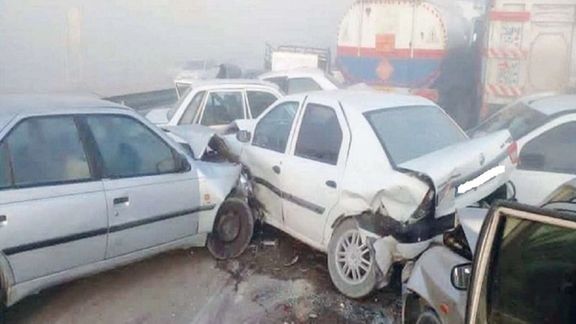
According to the official news agency IRNA, the omission was made with the knowledge of the parliament's presidium and Speaker Mohammad-Bagher Ghalibaf because they knew the constitutional watchdog, the Expediency Council would oppose it.
Critics, however, say that the Expediency Council and another watchdog, the Guardian Council, should not have intervened in a practical matter, and allege outside influences played a role in the interference.
Minister of industries, mines, and trade, Reza Fatemi-Amin, on March 13 claimed that the ban on car imports was a consequence of shortage of foreign currency rather than a measure to support domestic producers and the ban would be lifted soon.
Iran Khodro and Saipa, the two largest automakers, have a monopoly in the Iranian market.
Critics say by protecting automakers' interests in many ways, including by eliminating foreign competitors, successive Iranian administrations have become complicit in putting innocent people's lives in danger.
Road Police officials have repeatedly warned about inadequate safety standards of domestic cars. Speaking to the Iranian Students News Agency (ISNA) in October, Deputy Chief of Iran's traffic police, Brigadier-General Taymour Hosseini said road accidents were occurring due to inadequate safety standards as Iranian companies struggled to keep up with cost and parts sourcing. "Big companies in the world are working on intelligent cars but we have dropped our expectations so much that we are happy with having anti-lock braking systems,” he said.
In an interview on March 24 with Hamshahri Online, chief of Iran's road and traffic police, Brigadier General Kamal Hadianfar, criticized manufacturers for importing car parts from China, saying there is no effective quality control in the industry.
After two massive vehicle collisions involving tens of cars in southwestern Iran in January during which the cars' airbags failed to open, Hadianfar called domestically produced cars "carriages of death".

While Iran’s national carrier, Iran Air says Iraq does not allow entry to visitors who have received Iranian-made Covid-19 vaccines, the Interior Ministry says it is not aware of such a restriction.
In response to Iran Air's announcement, Hossein Ghasemi, the Interior Ministry's director of border affairs said the ministry had “not yet received official letters from the [Iranian] Ministry of Foreign Affairs regarding the Iraqi-approved vaccines."
Iraq has vaccinated 18 percent of its population, short of a 40 percent target set last year by the World Health Organization for January 2022, but has reported only 25,157 deaths. Iran has vaccinated 69 percent and has reported 140,315 deaths.
Iran has approved at least six homegrown vaccines for production, although some have not completed trials. Most of the 147 million doses administered in Iran are Sinopharm, recognized by the World Health Organization in May 2021.
In January 20121, Iran’s Supreme Leader Ali Khamenei banned the purchase of American and British vaccines, and the state began pushing for homegrown variants. Most vaccine projects seemed to be the result of competing economic interests of influential groups.
In September 2021, more controversy ensued when a former member of parliament alleged that Barakat, the most well-connected vaccine developer received one billion dollars from the state in advance and delivered only a fraction of the quantity promised.

The chairman of Central Bank of Iran (CBI) announced Monday that in the past one year it provided 57 percent more foreign currency to people and businesses.
Ali Salehabadi, appointed by President Ebrahim Raisi last year to head the CBI, said on Monday that from March 21, 2021, until March 20, 2022 (the Iranian year 1400) the government dispensed $57 billion to individuals and businesses, a 57-percent rise compared with the previous 12 months.
The foreign currency market is largely controlled by the government, except a black market, where people can buy and sell hard currencies. The size of this unofficial market is hard to estimate, since transactions are off the books and deliberately hidden.
In Iran’s centralized economy and banking system the government has been controlling the large transactions, through evolving regulations in the past 43 years since the Islamic Republic was established.
Businesses can always buy dollars in the black market or through official channels after receiving the necessary approvals, but the government has to inject the hard currency, either through its official banking system or the black market, to finance imports and prevent a run on the national currency.
If the figure Salehabadi announced is true, it means the Islamic Republic had at least $20 billion more at its disposal in the past 12 months for making available $57 billion for imports and other needs, such as foreign travel and stipends for students abroad – not mentioning capital flight from the country.
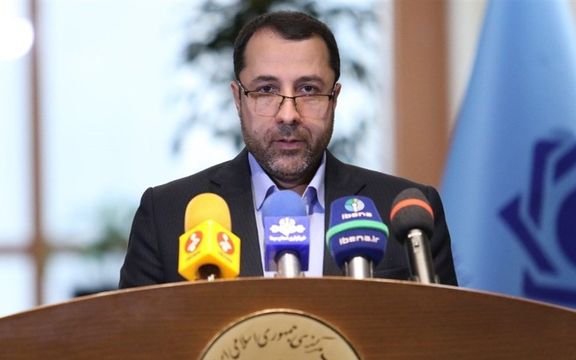
Part of the available hard currency invariably leaves Iran in the form of individuals taking their money into safer markets, such as Turkey, the United Arab Emirates or Western countries.
Again, if Salehabadi’s claim is true, it means Iran earned $20 billion more during March 2021-March 2022, presumably from higher oil exports, banned by United States’ sanctions that are increasingly circumvented by Tehran.
There have been numerous reports since late 2020 that Iran has been selling more oil, clandestinely, mainly to China at cheaper prices. Iranian shipments have increased from as low as 200,000 barrels per day in 2019 to as high as more than one million barrels in late 2021.
The question is why the US has not tried harder to enforce its sanctions.
President Joe Biden decided to rejoin the 2015 Iran nuclear agreement that his predecessor abandoned in May 2018, which meant he would lift sanctions if an agreement could be worked out with Iran to mutually revive the deal known as the JCPOA. One of his first foreign policy actions was the start of multilateral talks in Vienna a year ago, and it appears that the administration decided not to go out of its way to enforce the economic sanctions.
China and others might have also calculated that Washington would not make a fuss about sanctions violations amid nuclear talks, which also involved Moscow and Beijing.
The result has been considerably higher oil income for Iran, that some argue has made Tehran confident enough not to have agreed to a deal in Vienna after 12 months of talks, and lately demanding more concessions from the United States.
Although more dollars flowed into Tehran’s coffers in recent months, the Iranian currency has remained weak, having lost its value eightfold since the beginning of 2018. One US dollar now buys 270,000 rials, compared with 34,000 in 2017, before the US imposed sanctions.
The reason for a lack of improvement for the rial, or in the case of a 40-percent annual inflation rate, could be the depth of the economic crisis gripping the country. A mere $20 billion cannot quickly make a dent in the inefficient economy, burdened by tens of billions of dollars of energy subsidies energy and military, ideological overhead.
Despite the additional income, Iran is by no means out of the woods. Any tightening of sanctions can erode the gain in oil exports and return the situation to the pressures of 2019.
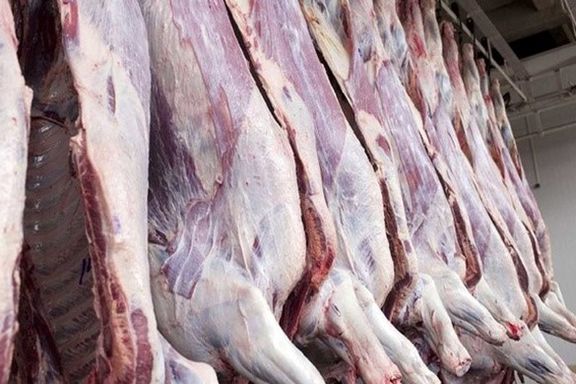
The chairman of the country's livestock supply council, Mansour Pourian, told ILNA Monday that a rise in red meat prices had accelerated despite an oversupply in the market.
Consumption of meat has decreased by as much as 50 percent in the past year due to higher prices.
Pourian said that red meat production was higher than consumption, with a surplus of 4 million sheep. He attributed this to stagflation and predicted that drought and water shortages in coming months would raise production costs. But he called on the government to allow the export of live cattle, which was banned last year as means to regulate the market and hold down domestic prices.
Inflation in Iran has been hovering around 40 percent after the United States imposed sanctions in 2018. But food prices have been rising at alarming levels, with government figures showing above 60-percent inflation at retail level in 2021, compared with 2020.
Aftab News website in Tehran reported on Sunday that one kilo of average fresh lamb meat has reached $8, which is not so high in comparison with Western countries, but is unaffordable for many Iranians who make around $200 a month.
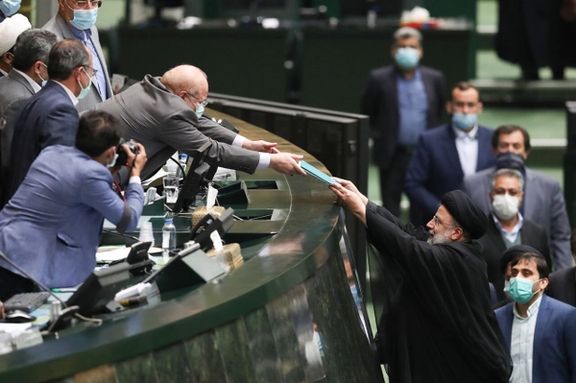
Chairman of the Executive Board of Iran's National Development Fund says governments must be prevented from exhausting the fund's resources to supplement their budget.
Speaking to the official news agency IRNA Sunday, Mehdi Ghazanfari, chairman of the executive board of Iran's sovereign wealth fund (NDF), criticized governments, past and present, for taking a larger share from the fund's reserves than they were allowed by law.
Ghazanfari said that governments should not rely on the NDF to supplement their budget, but they always resort to taking money from the fund when they face problems. "The fund's resources should increase to the level that it can provide the country's budget if we are not able to sell gas and oil."
The fund aims to turn some of the country's petrodollars to durable wealth, productivity, economic incentive and capital and preserve wealth from oil and gas for future generations.
The budget bill presented by President Ebrahim Raisi's government to parliament on December 12 proposed to save only 20 percent of oil revenues and transfer the other 20 percent, which should have been given to the fund, to the government.
But Supreme Leader Ali Khamenei, whose authorization was required, refused to allow the government to borrow from the fund to supplement its budget. Borrowing from the fund would mean printing Iranian rials and spending it in the country, further fueling inflation, which now stands at around 40 percent.
Based on the country's fifth and sixth five-year socio-economic development plans, the percentage of the fund's share from oil revenues has grown from 20 percent to 40 percent since 2011 when the fund was established.
Ghazanfari said the fund is now seriously seeking to recoup all the past loans paid to various government organizations, such as the National Iranian Oil Company (NIOC).
He also suggested that the fund's articles of association need to be revised so that the fund extends 30 percent of its resources to private, cooperative, and non-governmental sectors as loans, and ideally even use the 20 percent share of the government to help the private sector.
The remaining 50 percent of the fund's resources must be used for investment, he said, adding that they are also considering a revision in the conditions for offering loans in the future.
Like the currency reserve fund established in 2000, all administrations have borrowed from the fund for various purposes, including 2 billion euros in 2019 to increase the military's budget. The administration of President Mahmoud Ahmadinejad borrowed heavily from the fund which had been handed over to him with over $24 billion, including $2.7 billion to pay New Year cash handouts to all Iranians in 2013.
In 2008, the Ahmadinejad government classified information about the fund. In 2013, the newly elected President Hassan Rouhani said the fund had completely been drained by his predecessor. There is currently no concrete information on the fund's assets, but it is clear billions have been withdrawn since 2018 when the United States abandoned the 2015 nuclear agreement and imposed sanctions.
According to the charter of the National Development Fund, 40 percent of oil revenues next year should be saved by the government in the fund for investment on productive economic activities that would guarantee the welfare of future generations.